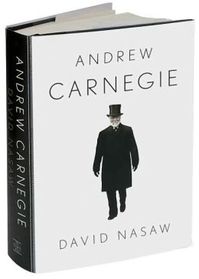(p. 4) In 2010, Mr. Cameron set up the Behavioral Insights Team — or nudge unit, as it’s often called. Three years later, the team has doubled in size and is about to announce a joint venture with an external partner to expand the program.
The unit has been nudging people to pay taxes on time, insulate their attics, sign up for organ donation, stop smoking during pregnancy and give to charity — and has saved taxpayers tens of millions of pounds in the process, said David Halpern, its director.
. . .
Creating Commitment
One morning in late May 2008, 10 copies of a little red book arrived for Rohan Silva in Norman Shaw South, the Westminster wing where the leader of the political opposition — at the time, the Conservatives — is traditionally housed.
The book was “Nudge,” and Mr. Silva, then 27 and David Cameron’s youngest adviser, piled them up on his desk. He had read the book as soon as it came out, a few weeks before. In fact, he had read deeply on behavioral economics and social psychology and met many of the American academics who specialized in the field. He was eager to spread the message in his country. “We used to joke about Ro being on commission for Thaler and Sunstein,” said Steve Hilton, Mr. Cameron’s former director of strategy and now a visiting scholar at Stanford.
. . .
Libertarian Paternalism
. . .
. . . , the question in Britain no longer seems to be whether, but how, to nudge. In their book, Professor Thaler and Mr. Sunstein defined their approach as steering people toward decisions deemed superior by the government but leaving them free to choose. “Libertarian paternalism,” they called it, and while that term is not used much in Britain, there is broad agreement on the subject among the left and the right.
Mr. Halpern used to be policy chief for Tony Blair, the former Labour prime minister, and later wrote a report on behavioral policy-making commissioned by Mr. Blair’s Labour Party successor, Gordon Brown. In one small way, the 2010 election campaign was also a race to decide which party would carry out an idea that had been percolating in the intellectual ranks of both for some years.
Wider Horizons
One of Mr. Thaler’s favorite nudges is something that Schiphol Airport near Amsterdam adopted in public bathrooms: a small sticker of a fly in the center of a urinal has been shown to improve aim. It saves the airport cleaning costs.
During a recent visit to Downing Street, Mr. Thaler ran into Mr. Cameron in the men’s room. There were no fly stickers.
“What’s the deal?” he joked.
For the full story, see:
KATRIN BENNHOLD. “The Ministry of Nudges.” The New York Times, SundayBusiness Section (Sun., December 8, 2013): 1 & 4.
(Note: ellipses added; bold in original.)
(Note: the online version of the article has the date December 7, 2013, and has the title “Britain’s Ministry of Nudges.”)
The Nudge book is:
Thaler, Richard H., and Cass R. Sunstein. Nudge: Improving Decisions About Health, Wealth, and Happiness. Revised & Expanded (pb) ed: Penguin Books, 2009.






